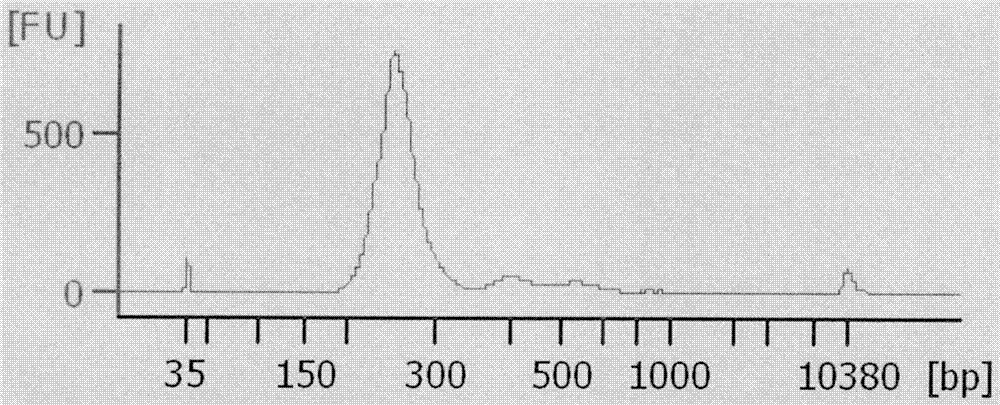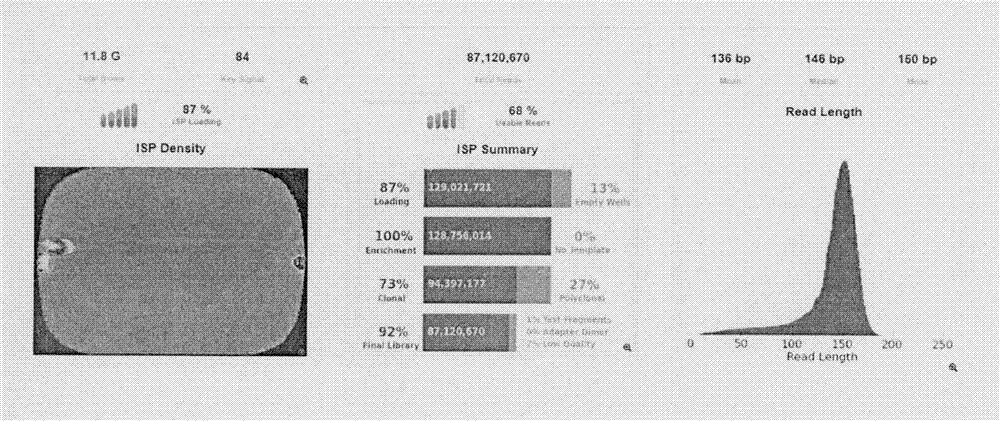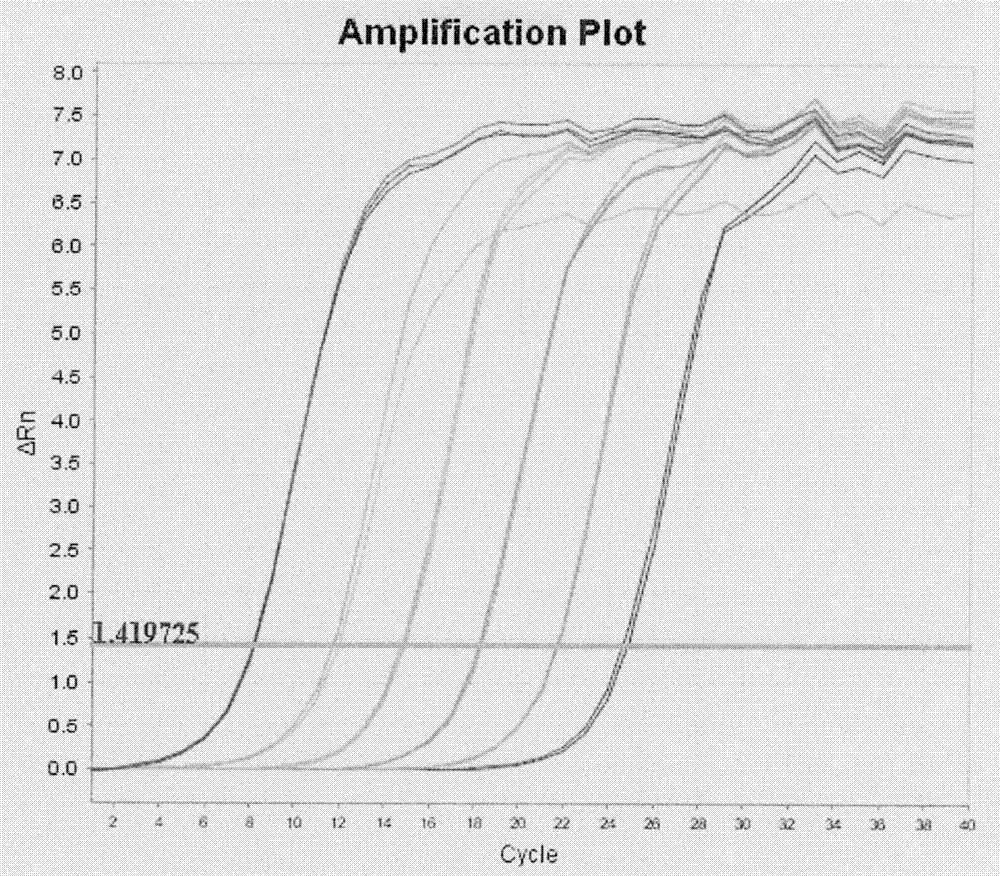A kind of standard substance and its preparation method of fetal cell-free dna library quantification
A DNA library and standard product technology, applied in the field of biological products, can solve the problems of increasing costs and affecting the efficiency of prenatal screening and diagnosis of chromosomal diseases, etc., and achieves easy preservation and small variation coefficient of qPCR standard product preparation bottles , to avoid the effect of bias
- Summary
- Abstract
- Description
- Claims
- Application Information
AI Technical Summary
Problems solved by technology
Method used
Image
Examples
Embodiment 1
[0036] Embodiment 1: the preparation of standard substance
[0037] 1. Adapter sequence and primer design and synthesis
[0038]A sequence that was as inconsistent as possible with the human genome was designed, and the following linker sequences were obtained according to the GC content and primer design principles. In order to prevent the linker sequence from being connected to the target fragment in the reverse direction, a sticky end is set at the 3' end, and the protruding C is modified to prevent the sticky end from being degraded. Both ends of the 5' were dephosphorylated. In order to prevent the blunt end of the adapter sequence itself from ligation, the following factors were synthesized to synthesize the following double-stranded adapter sequences Adapter S1 and Adapter S2:
[0039] Adapter S1:
[0040] 5′-CCA TCT CAT CCC TGC GTG TCT CCG ACT CAG-3′
[0041] 3′-C*C*C*GGT AGA GTA GGG ACG CAC AGA GGC TGA GTC-5′
[0042] Adapter S2:
[0043] 5′-CCA CTA CGC CTC CGC T...
Embodiment 2
[0063] Embodiment 2: the use method of standard substance and the establishment of standard curve
[0064] 1. Dilution method
[0065] Dilute the obtained library according to the following calculation method, the first dilution to 100pM
[0066]
[0067] 660 (Da) is the relative molecular mass of one base pair of DNA.
[0068] The 100pM library was sequentially diluted 10-fold to obtain 10pM, 1pM, 0.1pM, 0.01pM and 0.001pM libraries.
[0069] 2. Experimental method
[0070] The 6 library dilutions obtained in step 1 were subjected to real-time fluorescent quantitative PCR. KAPA SYBR FASTUniversal qPCR kit was used for analysis.
[0071] qPCR reaction system: 20 μL mixture contains 4 μL template, 10 μL 2×SYBR mix, 1 μL (10 μM) primers NIPT-Library F and NIPT-Library R each, 4 μL Nuclease Free Water.
[0072] qPCR reaction program: pre-denaturation at 95°C for 5 min, 40 cycles of denaturation at 95°C for 30 s, and annealing at 60°C for a total of 45 s.
[0073] Melting...
Embodiment 3
[0078] Example 3: Repeatability of qPCR Quantitative Standard Detection
[0079] The prepared 100pM standard and the other 6 dilutions of the standard were repeatedly frozen and thawed 8 times at the same time for qPCR detection. The CT value of the number of cycles obtained is shown in Table 2. The coefficient is less than 5.00%, relatively small, and can be used in conjunction with a trisomy 21, 18, 13 trisomy detection kit (semiconductor sequencing method) (8 RUNs).
[0080] Table 2. Results of 8 repeated freeze-thaw cycles
[0081]
PUM
| Property | Measurement | Unit |
|---|---|---|
| PCR efficiency | aaaaa | aaaaa |
Abstract
Description
Claims
Application Information
 Login to View More
Login to View More - R&D
- Intellectual Property
- Life Sciences
- Materials
- Tech Scout
- Unparalleled Data Quality
- Higher Quality Content
- 60% Fewer Hallucinations
Browse by: Latest US Patents, China's latest patents, Technical Efficacy Thesaurus, Application Domain, Technology Topic, Popular Technical Reports.
© 2025 PatSnap. All rights reserved.Legal|Privacy policy|Modern Slavery Act Transparency Statement|Sitemap|About US| Contact US: help@patsnap.com



